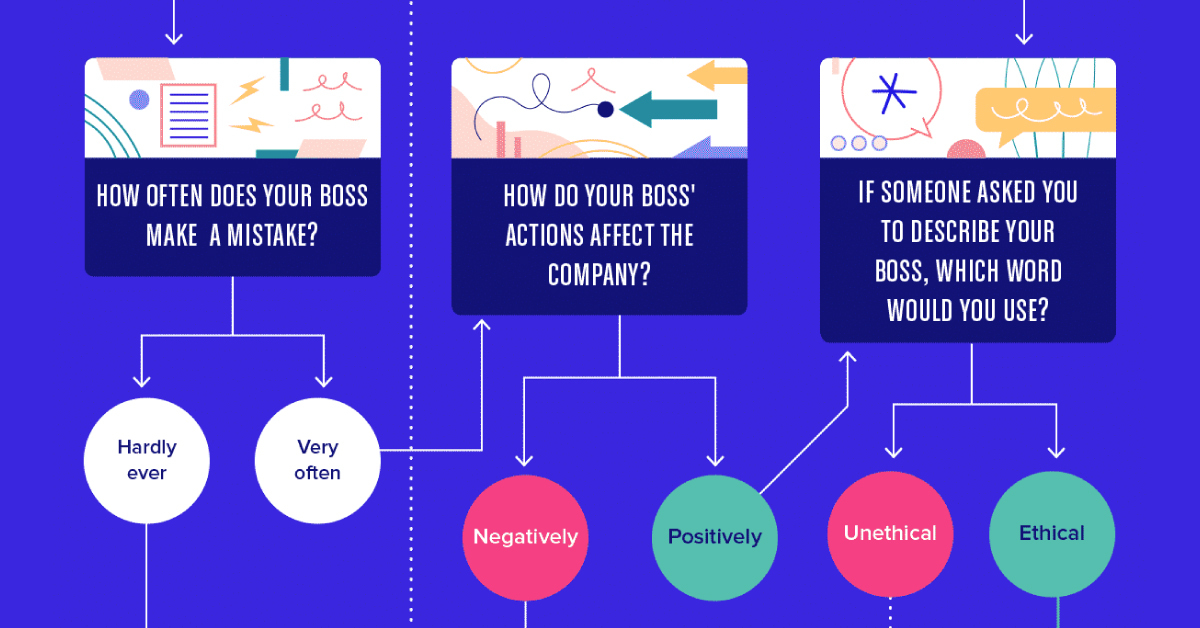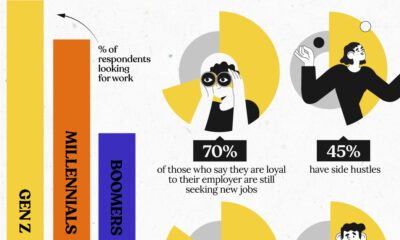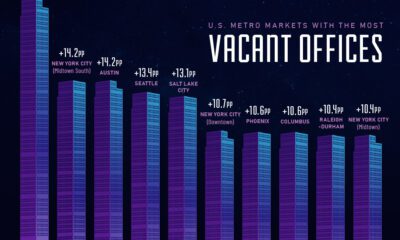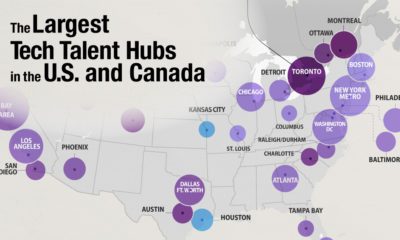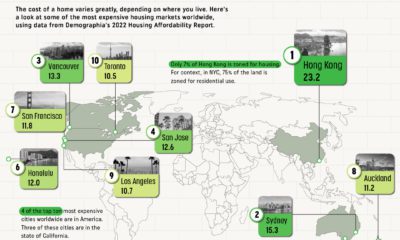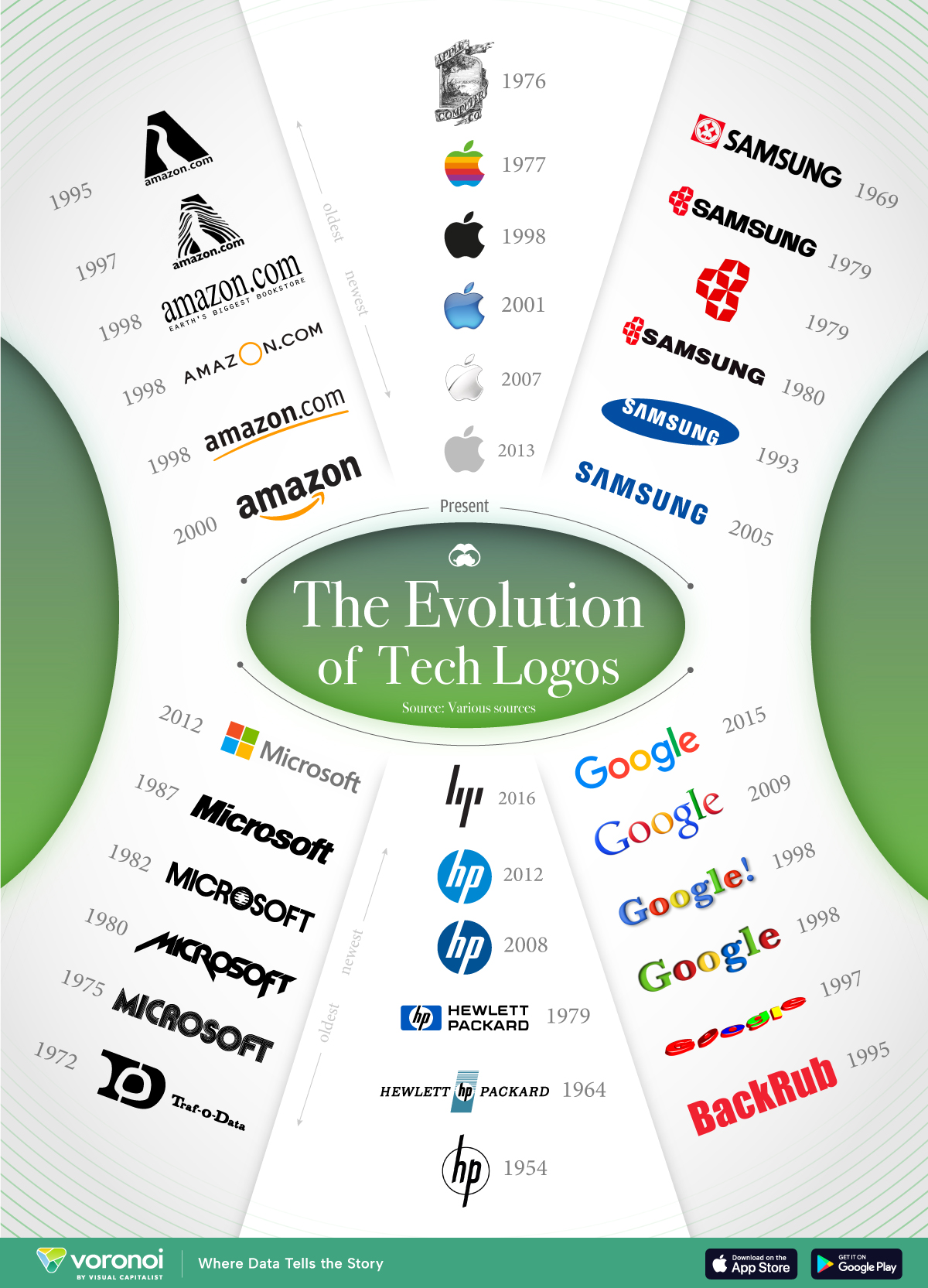Business
Flowchart: Are You Working for a Toxic Boss?

Flowchart: Are You Working for a Toxic Boss?
The experience of less-than-ideal work situations are common, and the global pandemic has likely heightened challenges for bosses and employees alike. How can mediocre or outright hostile leadership impact your ability to work well?
This flowchart from Resume.io helps you figure out if you’ve got a toxic boss weighing you down. It covers seven archetypes of toxic bosses, and how to respond to each one.
The 7 Types of Toxic Bosses
Barbara Kellerman, a professor of public leadership at the Harvard Kennedy School identifies seven types of toxic bosses that can exist.
| Number | Toxic Boss Type | Description |
|---|---|---|
| #1 | Incompetent Boss | Unable or unwilling to do their job well |
| #2 | Rigid Boss | Confuses inflexibility with strength |
| #3 | Intemperate Boss | Lacks self-knowledge and self-control |
| #4 | Callous Boss | Lacks empathy and kindness |
| #5 | Corrupt Boss | Steals or cheats to promote their own interests |
| #6 | Insular Boss | Is cliquish or unreachable |
| #7 | Evil Boss | Causes pain to further their sense of power and dominance |
Some bosses simply don’t have the capacity to do their jobs, which makes it more difficult for their employees. Others can be corrupt or callous, creating a highly unmotivating work environment.
But how many people are in this situation?
To give a few quick examples, around 13% of all employees in Europe work under a toxic boss. In the U.S., a whopping 75% say they have left a job primarily because of a bad boss.
What’s so Bad about a Bad Boss?
Bosses can make or break your job experience. Having a toxic boss can cause your quality of work to suffer, which can then trickle down to impact your overall career.
In fact, Harvard Business Review found that a toxic work environment can lead to decreased motivation and employee disengagement. This has significant knock-on effects such as:
- 37% higher absenteeism
- 60% more errors in their work
- 18% lower productivity
According to the same study, this can cause companies to have 16% lower profitability and a 65% lower share price over time.
The physical side effects are not to be underestimated, either. One Swedish study found that a bad boss who increases your job strain can, in tandem, increase your chance of cardiac arrest by 50%. Additionally, a study out of Stanford found that mismanagement in the American workplace and subsequent stress could potentially be responsible for 120,000 deaths per year.
Tips to Deal with a Toxic Boss
Bad bosses can hurt the company, the overall work environment, and can impact your professional growth and personal health.
So, what can you do about it?
| Number | Toxic Boss Type | Solution |
|---|---|---|
| #1 | Incompetent Boss | Use initiative |
| #2 | Rigid Boss | Use the power of persuasion |
| #3 | Intemperate Boss | Look for opportunities |
| #4 | Callous Boss | Ask for a 1-on-1 meeting |
| #5 | Corrupt Boss | Find co-workers who share your concerns |
| #6 | Insular Boss | Offer them opportunities to open up |
| #7 | Evil Boss | Take a stand |
Different kinds of bosses require different approaches, and some simply aren’t worth putting up with. For instance, taking initiative with an incompetent boss is one relatively easy solution, but having a 1-on-1 with a callous boss takes more effort. An evil boss requires intervention from HR.
If you don’t have a toxic boss, consider yourself lucky. Here are two ways to keep your working relationship strong:
- Take initiative
- Keep up open communication
- Ask for constant feedback so you know where you stand
- Under-promise and over-deliver
What Can Bosses Do?
Toxic bosses can have disastrous consequences on employees and companies. According to one Gallup survey, at minimum, 75% of the reasons for voluntary turnover can be influenced by managers.
After looking at some of the ways employees can address toxic bosses, how can bosses ensure their work environment is healthy? Harvard Business Review recommends four main things:
- Encourage social connections
- Show empathy
- Go out of your way to help
- Encourage employees to talk to you—especially about their problems
The future of work may be changing, with remote work becoming more popular and feasible. This can pose problems in creating a strong work culture.
However, if bosses and employees can work together to foster a positive and healthy work environment, everyone, including the bottom line, will benefit.
Technology
How Tech Logos Have Evolved Over Time
From complete overhauls to more subtle tweaks, these tech logos have had quite a journey. Featuring: Google, Apple, and more.
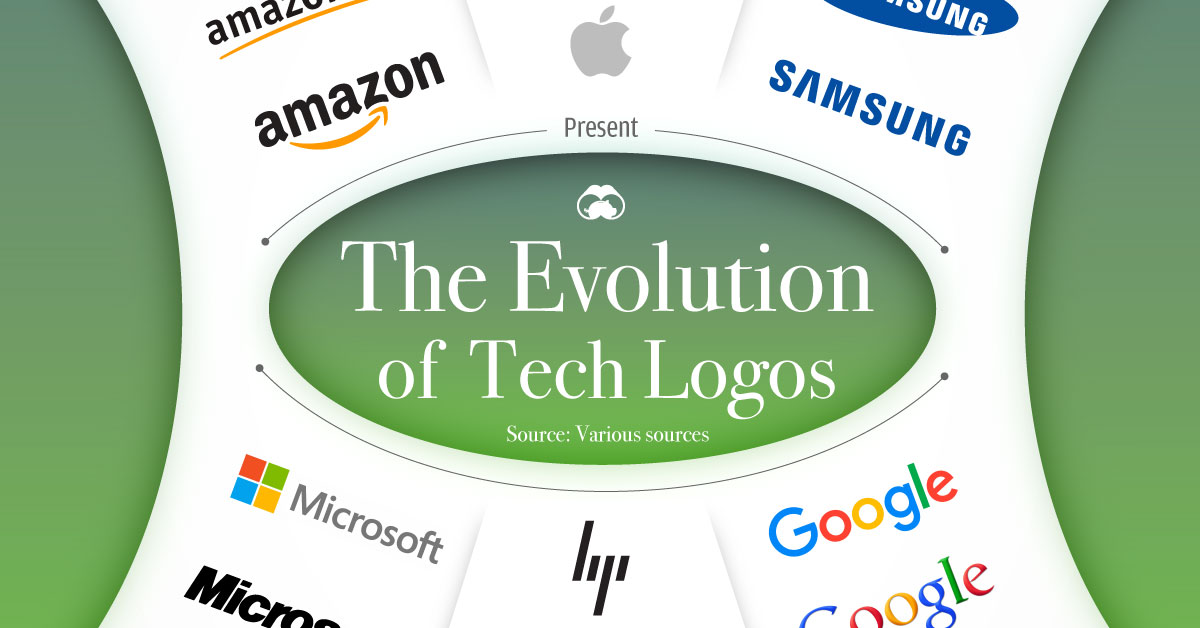
How Tech Logos Have Evolved Over Time
This was originally posted on our Voronoi app. Download the app for free on iOS or Android and discover incredible data-driven charts from a variety of trusted sources.
One would be hard-pressed to find a company that has never changed its logo. Granted, some brands—like Rolex, IBM, and Coca-Cola—tend to just have more minimalistic updates. But other companies undergo an entire identity change, thus necessitating a full overhaul.
In this graphic, we visualized the evolution of prominent tech companies’ logos over time. All of these brands ranked highly in a Q1 2024 YouGov study of America’s most famous tech brands. The logo changes are sourced from 1000logos.net.
How Many Times Has Google Changed Its Logo?
Google and Facebook share a 98% fame rating according to YouGov. But while Facebook’s rise was captured in The Social Network (2010), Google’s history tends to be a little less lionized in popular culture.
For example, Google was initially called “Backrub” because it analyzed “back links” to understand how important a website was. Since its founding, Google has undergone eight logo changes, finally settling on its current one in 2015.
| Company | Number of Logo Changes |
|---|---|
| 8 | |
| HP | 8 |
| Amazon | 6 |
| Microsoft | 6 |
| Samsung | 6 |
| Apple | 5* |
Note: *Includes color changes. Source: 1000Logos.net
Another fun origin story is Microsoft, which started off as Traf-O-Data, a traffic counter reading company that generated reports for traffic engineers. By 1975, the company was renamed. But it wasn’t until 2012 that Microsoft put the iconic Windows logo—still the most popular desktop operating system—alongside its name.
And then there’s Samsung, which started as a grocery trading store in 1938. Its pivot to electronics started in the 1970s with black and white television sets. For 55 years, the company kept some form of stars from its first logo, until 1993, when the iconic encircled blue Samsung logo debuted.
Finally, Apple’s first logo in 1976 featured Isaac Newton reading under a tree—moments before an apple fell on his head. Two years later, the iconic bitten apple logo would be designed at Steve Jobs’ behest, and it would take another two decades for it to go monochrome.
-

 Mining1 week ago
Mining1 week agoGold vs. S&P 500: Which Has Grown More Over Five Years?
-
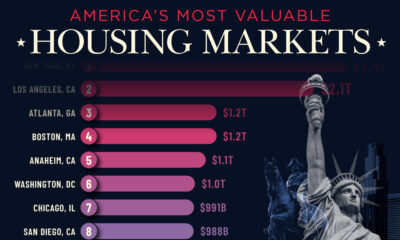
 Markets2 weeks ago
Markets2 weeks agoRanked: The Most Valuable Housing Markets in America
-

 Money2 weeks ago
Money2 weeks agoWhich States Have the Highest Minimum Wage in America?
-
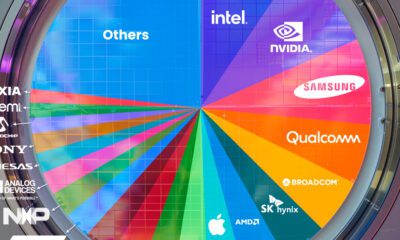
 AI2 weeks ago
AI2 weeks agoRanked: Semiconductor Companies by Industry Revenue Share
-

 Markets2 weeks ago
Markets2 weeks agoRanked: The World’s Top Flight Routes, by Revenue
-

 Countries2 weeks ago
Countries2 weeks agoPopulation Projections: The World’s 6 Largest Countries in 2075
-
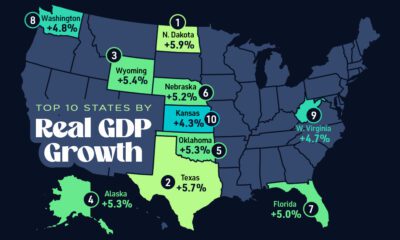
 Markets2 weeks ago
Markets2 weeks agoThe Top 10 States by Real GDP Growth in 2023
-
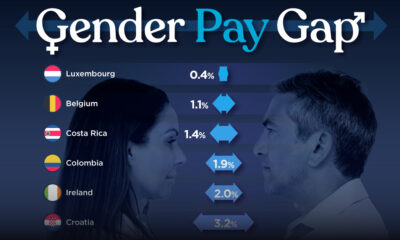
 Demographics2 weeks ago
Demographics2 weeks agoThe Smallest Gender Wage Gaps in OECD Countries
